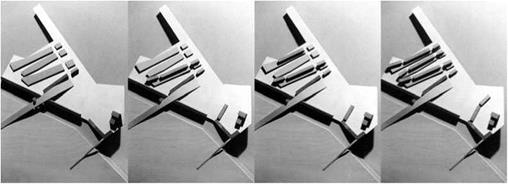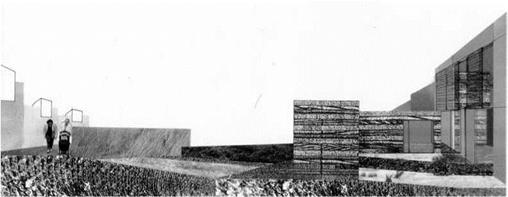One of the first questions asked about the viability of urban agriculture in existing cities is: where will the land come from? The answer will depend on whether the urban agriculture is to be located within the built-up area of an existing city or if it is to be sited within a planned urban extension on greenfield or brown-field sites (see Figure 25.8).
Greenfield and brownfield sites provide extensive areas of land within which CPULs may be developed. For urban agriculture, the availability of open land is not the only requirement – soil type and
Figure 25.3 Victoria Park CPUL: External view of apartments and landscape.
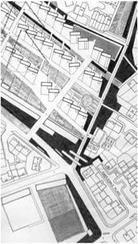


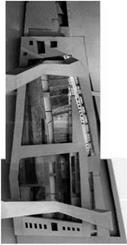
Sheffield site plan 92 persons per hectare
Newark site model 214 persons per hectare
Figure 25.4
Shoreditch site model 450 persons per hectare
condition will have a significant bearing on where crops can be grown and the degree of soil repair that may be required (see Chapter 8).
Integrating CPULs into existing cities will require the consideration of a number of different sources for land: existing undeveloped land; land from sites which are due for redevelopment; land within proposed developments; and portions of existing open space such as parks which may release pieces of land for CPULs. All recycled land, that is land which has had a previous use, will require testing for contamination and may require the application of appropriate techniques to ‘repair’ the soil.
Within existing cities roads provide an important source of land for CPULs. Converting roads into routes for connections between patches of open urban space and urban agriculture is technically relatively straightforward, converting them for use as urban agriculture sites is more challenging.
If roads are to be converted for crop growing, either raised beds or fields will have to be created. Both of these options will require the reintroduction or recreation of viable topsoil, which will have been removed during the construction of the road. The amount of road space given over to food growing will need to be considered in each situation, and issues such as the viability of breaking up and
Figure 25.4 Comparative study of CPULs at different densities.
|
|
|
|
|
|
|
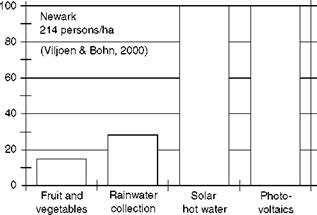
Figure 25.5 Site yield for Elasticity CPUL, Sheffield. Figure 25.6 Site yield for Newark CPUL.
crushing materials judged against the many returns given by urban agriculture. In many European cities the complete demolition and onsite crushing of buildings, paving and parking areas is now common practice when a new use cannot be found for them. The crushed materials are then reused as aggregate or fill in new developments. In London, extensive industrial areas to the east of the city have undergone such a transformation since about 2000, and this process can equally be applied to selected roads.
If roads are converted to CPULs, a city or developer will not have to purchase new land, as it is already there. Furthermore, the introduction of urban agriculture, with its associated pastoral and ornamental qualities, may increase the value of adjacent land, commensurate with the quality of life improvements for residents inhabiting developments alongside the landscape. These economic benefits are like the indirect benefits derived from
Amsterdam Plein, or Trafalgar Square, each having their own costs, but with collateral benefits for adjacent spaces.
Brownfield sites provide another source of land in existing cities. Where these have previously had an industrial use, the ground is likely to be contaminated and require detoxification (see Chapter 8). The techniques required to detoxify contaminated soil are now well understood and frequently applied. The costs are relatively high and for this reason it is often confined to sites that have the potential for high economic return once developed. Inspection of proposals for new residential development on land to the east of London, in the ‘Thames Gateway’ shows that a significant proportion of the site area of land for residental development is not built on. This land, within the curtilage of brownfield sites, could be used for productive uses in a manner similar to schemes described in this and the previous chapter (see Figure 25.4).
Figure 25.7 Site yield for Shoreditch CPUL.
|
Figure 25.8 |
|
Figure 25.9 |
Figure 25.8 Elasticity CPUL, Sheffield: Site model showing incremental development. Urban agriculture fields structure the site and portions of these become plots for future buildings.
Figure 25.9 ElastiCity CPUL, Sheffield: External perspective showing the relationship between urban agriculture fields, garden/courtyards and dwellings.
CPULs and urban agriculture in particular can be utilised as part of a strategy for incremental development. Incremental development links economic and environmental strategies. It accepts that development will not always occur at one time, indeed a site may take many years to reach its final form, or may even be conceived as a place that can continuously evolve and adapt. On the Manor Estate in Sheffield, we have proposed such a development. Here, an impoverished estate of terraced houses could be transformed into a CPUL, parts of which would erode over time as house building occurs, as and when funds and necessity permit. This strategy allows a cheap initial intervention on the site, which would mark plots for urban agriculture fields, paths and roads. Economics can determine when supporting infrastructures are installed. Figure 25.4 (see Sheffield site plan) illustrates the final form the development would take, with fingers of housing alternating with fingers of urban agriculture, connected to a larger continuous landscape. Initially, fields and roads are marked on the site, and the fields are operated as commercial market gardens, wildlife gardens, play and sporting facilities, providing an economic and environmental return from the land. As housing is built, some of the urban agriculture fields are given up and become plots for houses. Although this process accommodates unpredictable future scenarios, it provides a coherent framework in which development can occur. Building can progress quickly or slowly, but at any stage the place will read as a complete entity (see Figure 25.9).
Urban agriculture can also be understood as a means of supporting emerging enterprises, such as farmers’ markets. Nina Planck describes how these have taken root in London (see Chapter 10). We are now in a situation where a network of markets, that is sales outlets, exist, but farmers are travelling on average a total of 100 miles (160 km) to and from markets (see Chapter 3). Currently, an infrastructure for the sale of locally grown food exists, but the supporting infrastructure of adjacent market gardens does not. The environmental case for local food production has been made and the economic desire for fresh locally grown food is evident in cities as disconnected from their productive hinterland, as is London.
Another economic return of CPULs will be that workplaces and dwellings can be sited within an environment of natural or rural characteristics, thereby answering those human desires, which are so well illustrated by the popularity of commuter belt dwellings located on the urban/rural fringe. CPULs will offer an inner-urban alternative to suburban sprawl, reducing drastically the commuting required between dormitory suburbs and urban centre (see Figure 25.10).


